So here is the problem
I have a connection form sending a Post request to servlet.
this servlet forwards the request to different pages after doing some tests (password, email verification of user).
Only problem is I get the correct page as a response when looking at my POSTrequest but the page doesn't display in my web browser. How come?
Here's my code.
sign in servlet
package AHSServlets;
import java.io.IOException;
import objMetier.signInForm;
import javax.servlet.ServletException;
import javax.servlet.annotation.WebServlet;
import javax.servlet.http.HttpServlet;
import javax.servlet.http.HttpServletRequest;
import javax.servlet.http.HttpServletResponse;
import javax.servlet.http.HttpSession;
import AHSbeans.User;
@WebServlet(
name = "signInServ",
urlPatterns = {"/"}
)
public class signInServ extends HttpServlet{
public void doGet(HttpServletRequest request, HttpServletResponse response) throws ServletException, IOException
{
this.getServletContext().getRequestDispatcher("/signIn.jsp").forward(request, response);;
}
public void doPost(HttpServletRequest request, HttpServletResponse response) throws ServletException, IOException
{
signInForm connect = new signInForm();
User user = connect.validateSignIn(request);
HttpSession session = request.getSession();
if (user != null) {
request.setAttribute("connect", connect);
session.setAttribute("sessionUser", user);
this.getServletContext().getRequestDispatcher("/restrict_client/client.jsp").forward(request, response);
}
else
{
request.setAttribute("connect", connect);
this.getServletContext().getRequestDispatcher("/signIn.jsp").forward(request, response);
}
}
}
signIn.jsp
<%@ page pageEncoding="UTF-8" %>
<!DOCTYPE html>
<html>
<head>
<meta charset="utf-8" />
<script src="https://cdnjs.cloudflare.com/ajax/libs/angular.js/1.7.5/angular.min.js" integrity="sha256-QRJz3b0/ZZC4ilKmBRRjY0MgnVhQ+RR1tpWLYaRRjSo=" crossorigin="anonymous"></script>
</head>
<body ng-App="AHS" ng-controller="myCtrl">
<form ng-submit="submitForm()">
<div>
<input type="text" ng-model="userObj.mail" placeholder="email"/>
</div>
<div>
<input type="password" ng-model="userObj.password" placeholder="password">
</div>
<div>
<button type="submit">Connect</button>
</div>
</form>
<div>
<span>${connect.error}</span>
</div>
<script type="text/javascript">
var app = angular.module("AHS", []);
app.controller("myCtrl", function ($scope, $http, $httpParamSerializerJQLike){
$scope.userObj = {
mail: "",
password: "",
}
$scope.submitForm = function() {
$http({
method : 'POST',
url : '/', // use relative
data: $httpParamSerializerJQLike($scope.userObj),
headers: {
'Content-Type': 'application/x-www-form-urlencoded; charset=UTF-8;'
}
});
};
});
</script>
</body>
</html>
signIn class
package objMetier;
import javax.servlet.http.HttpServletRequest;
import AHSbeans.User;
public class signInForm {
private String EMAIL_FIELD = "email";
private String PASSWORD_FIELD = "password";
private String error = "Default";
public String getError()
{
return (this.error);
}
public User validateSignIn(HttpServletRequest request){
if(request.getParameter("password").isEmpty())
{
this.error = "wrong password";
return (null);
}
User user = new User();
user.setEmail("test@hotmail.com");
this.error = "connected";
return (user);
}
}
As you can see in the signIn.jsp I have ${connect.error} supposed to show me the error message. I repeat myself but I can see this message displayed using debugger but not on my web browser. So what happens is after POST it stays on the web page path and I get the HTML only in the response.
EDIT
here is a screenshot
